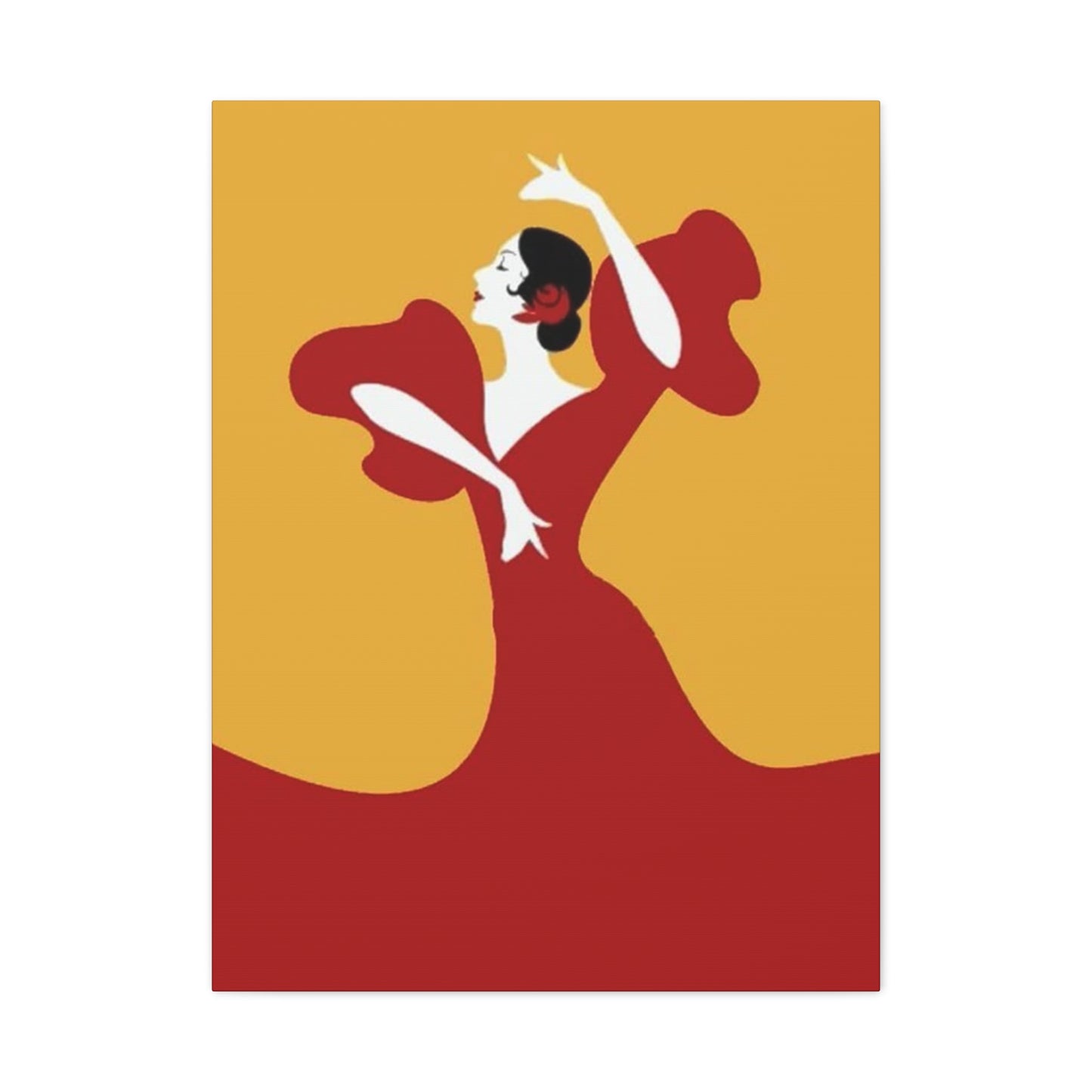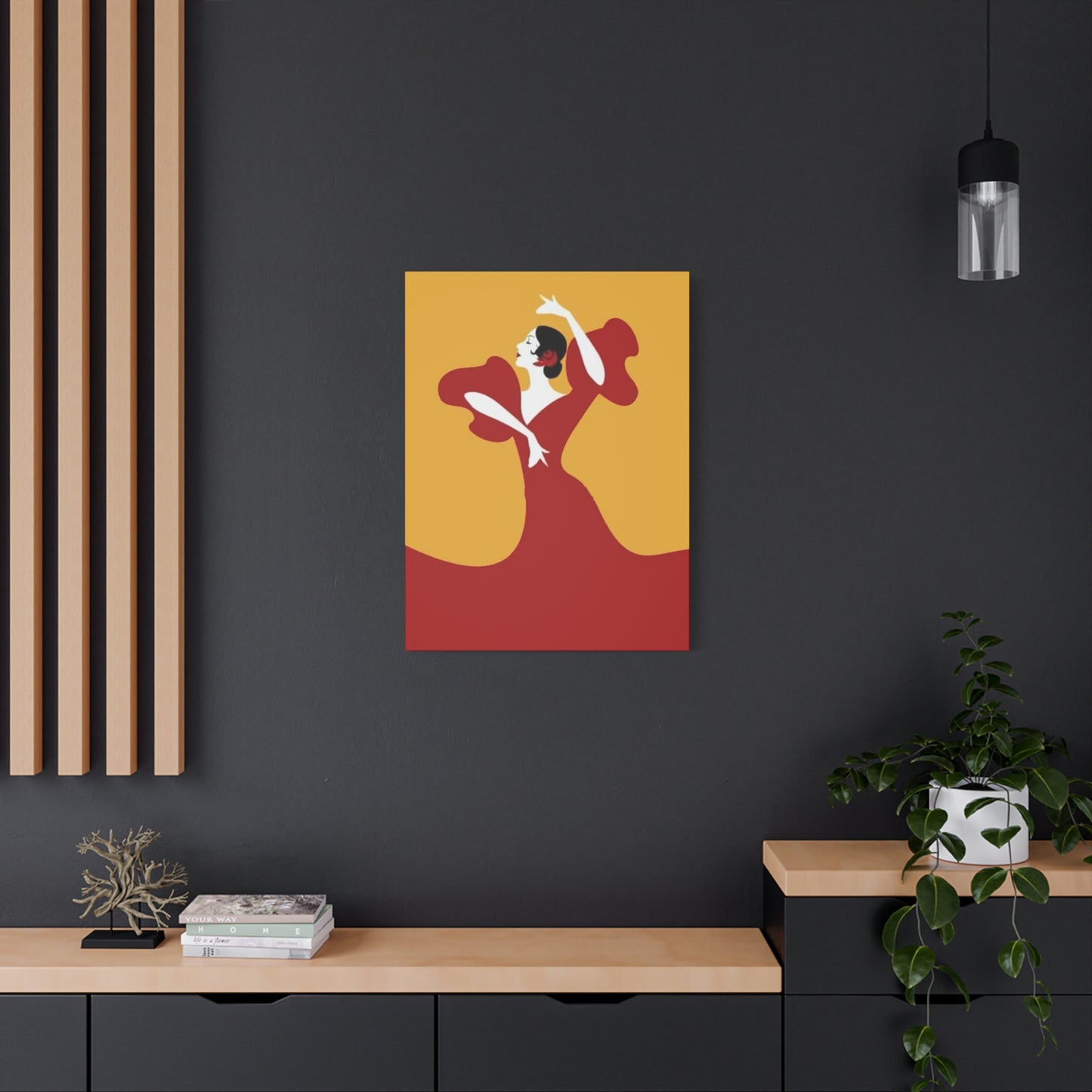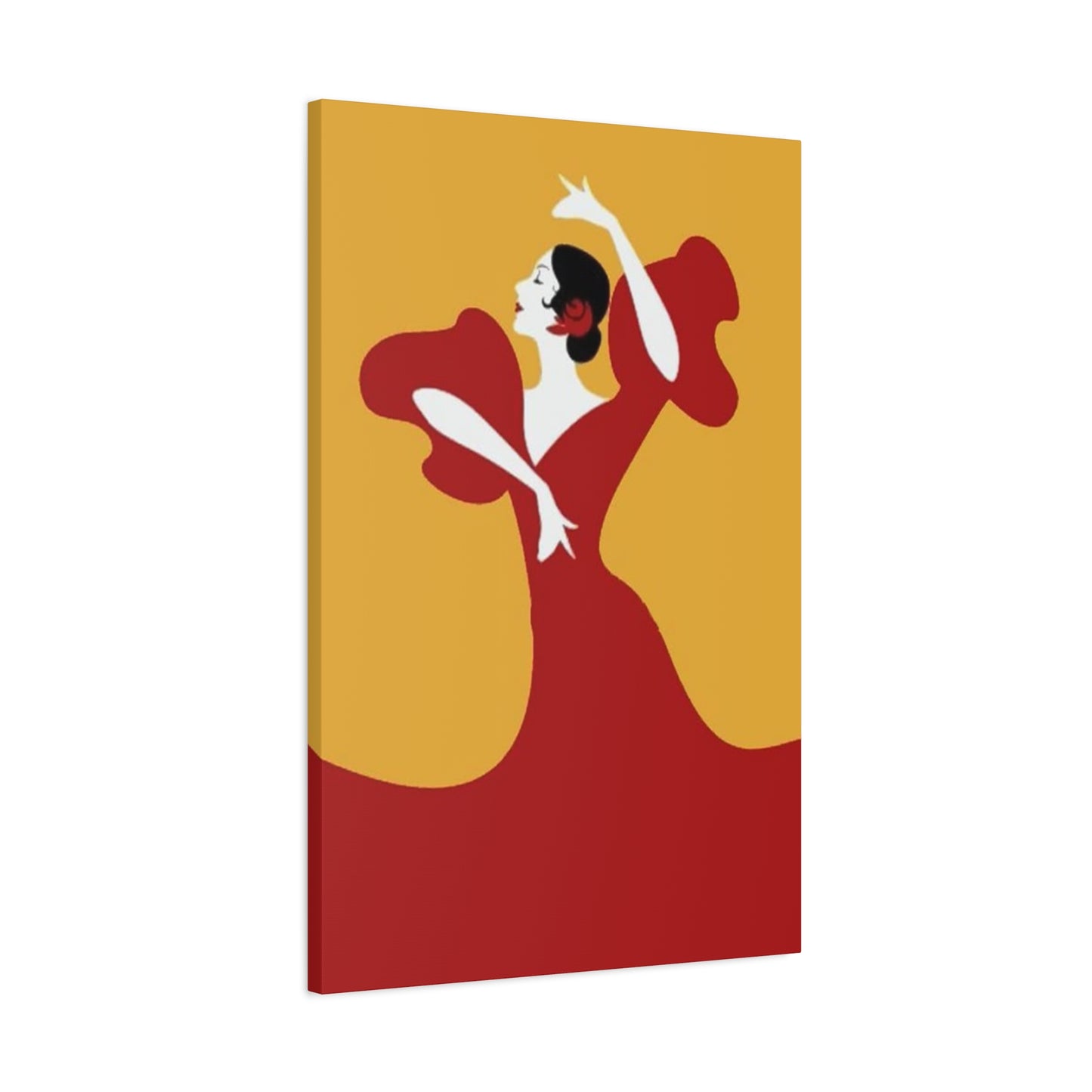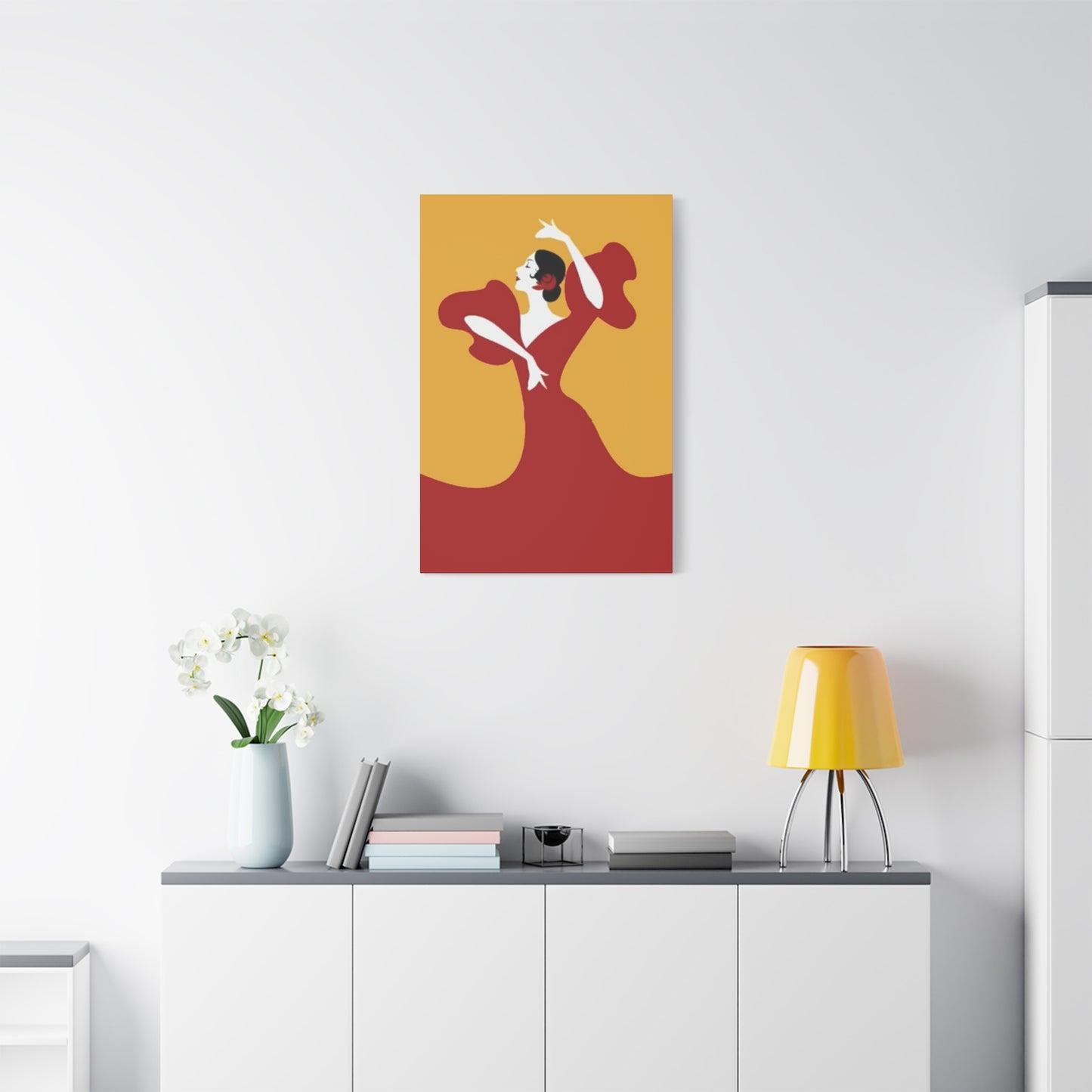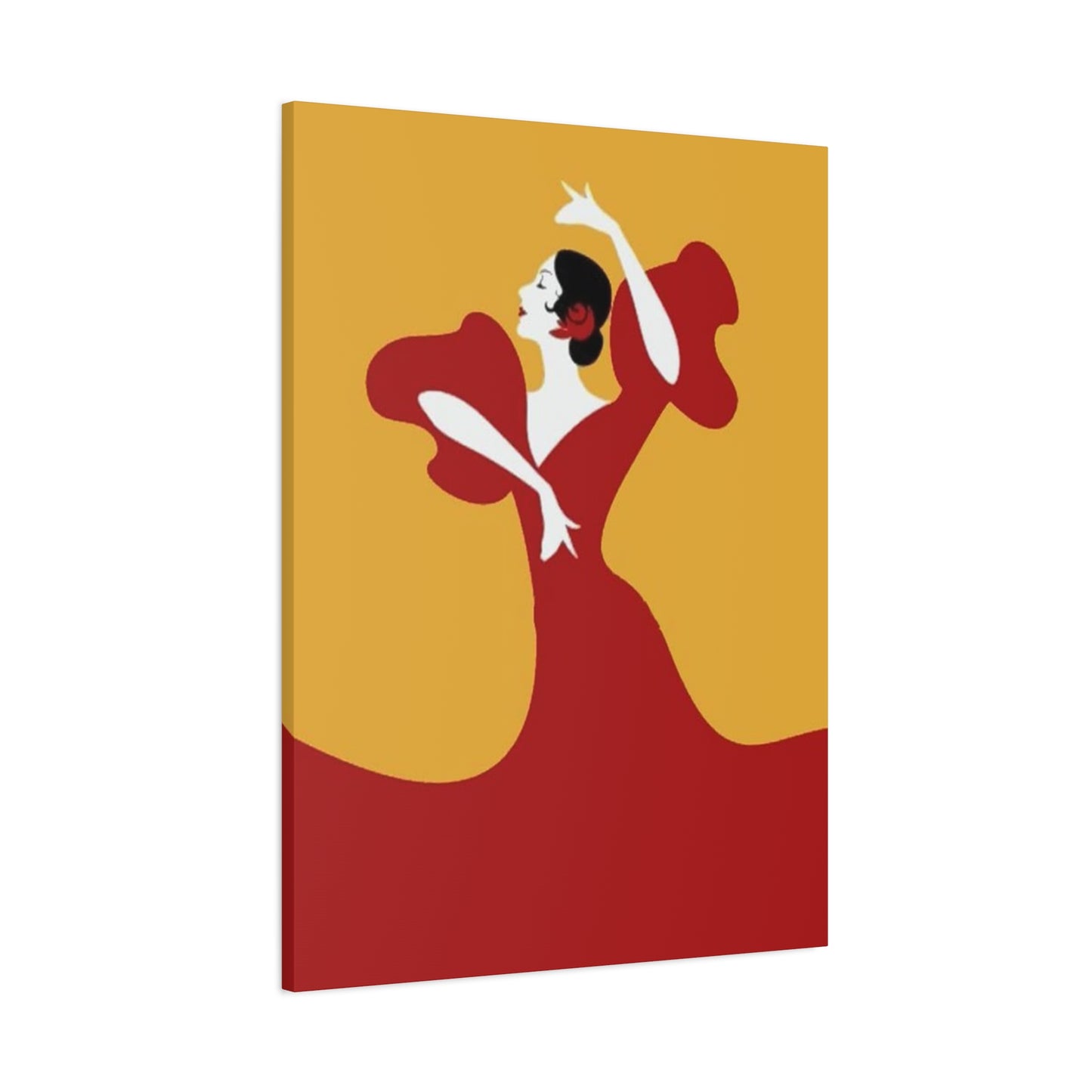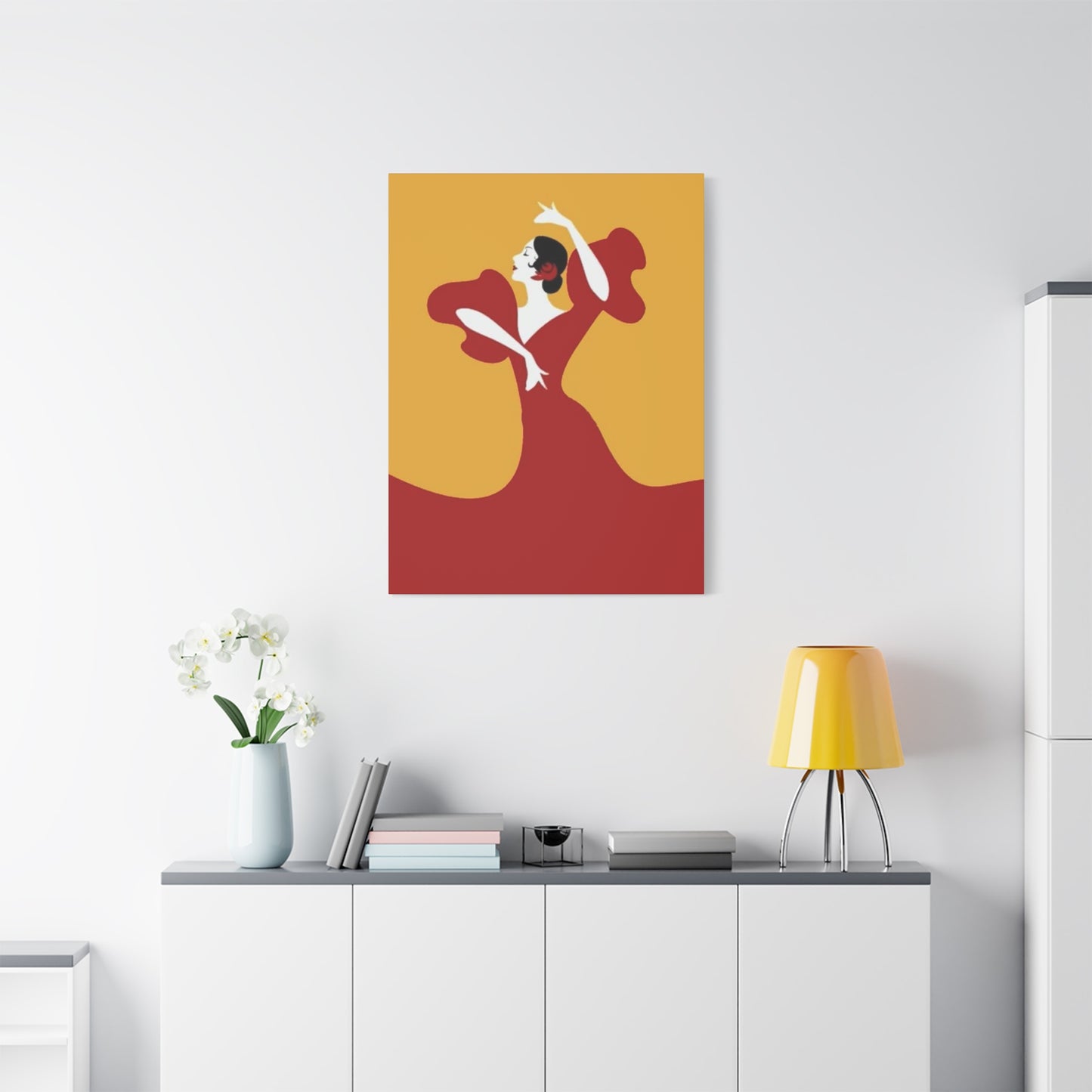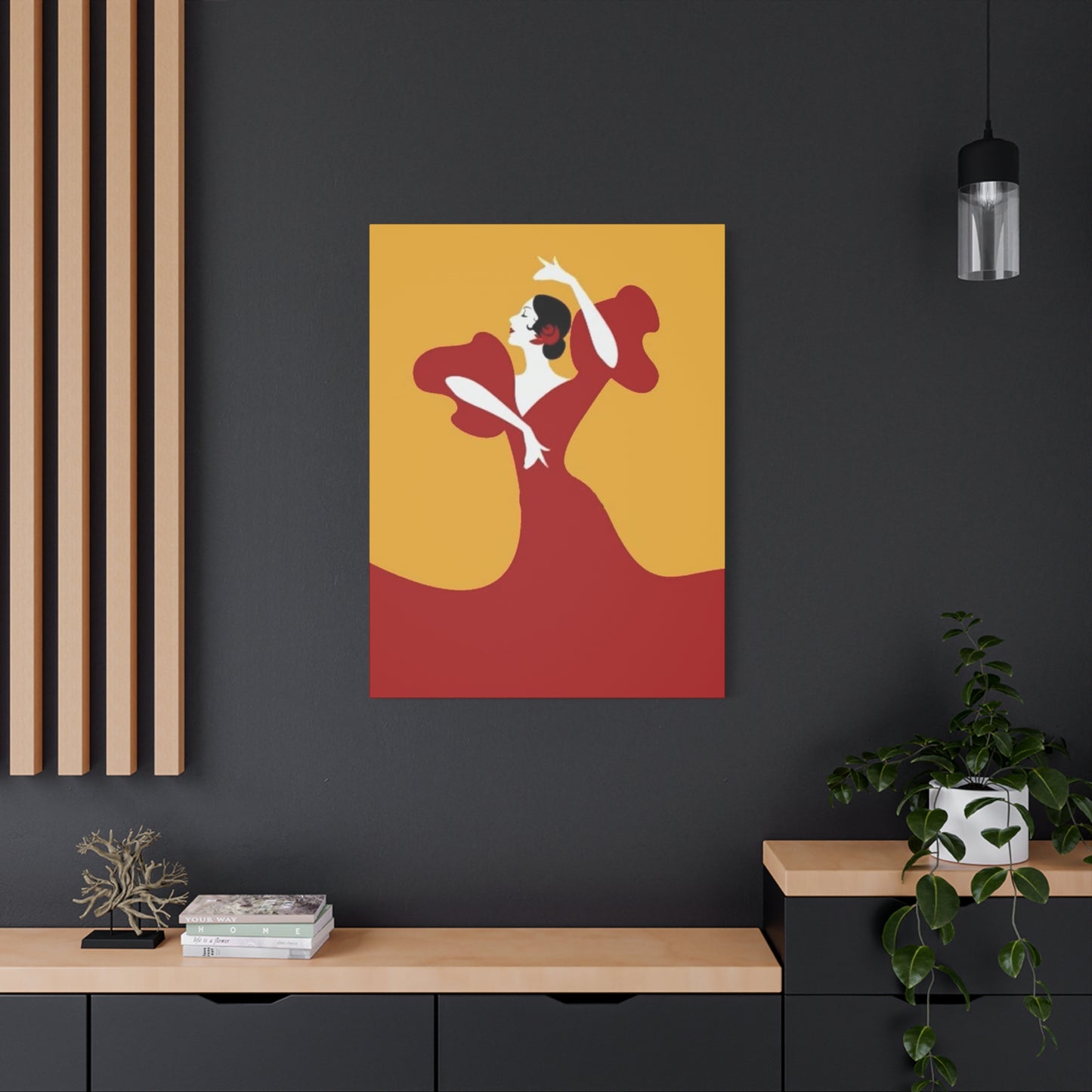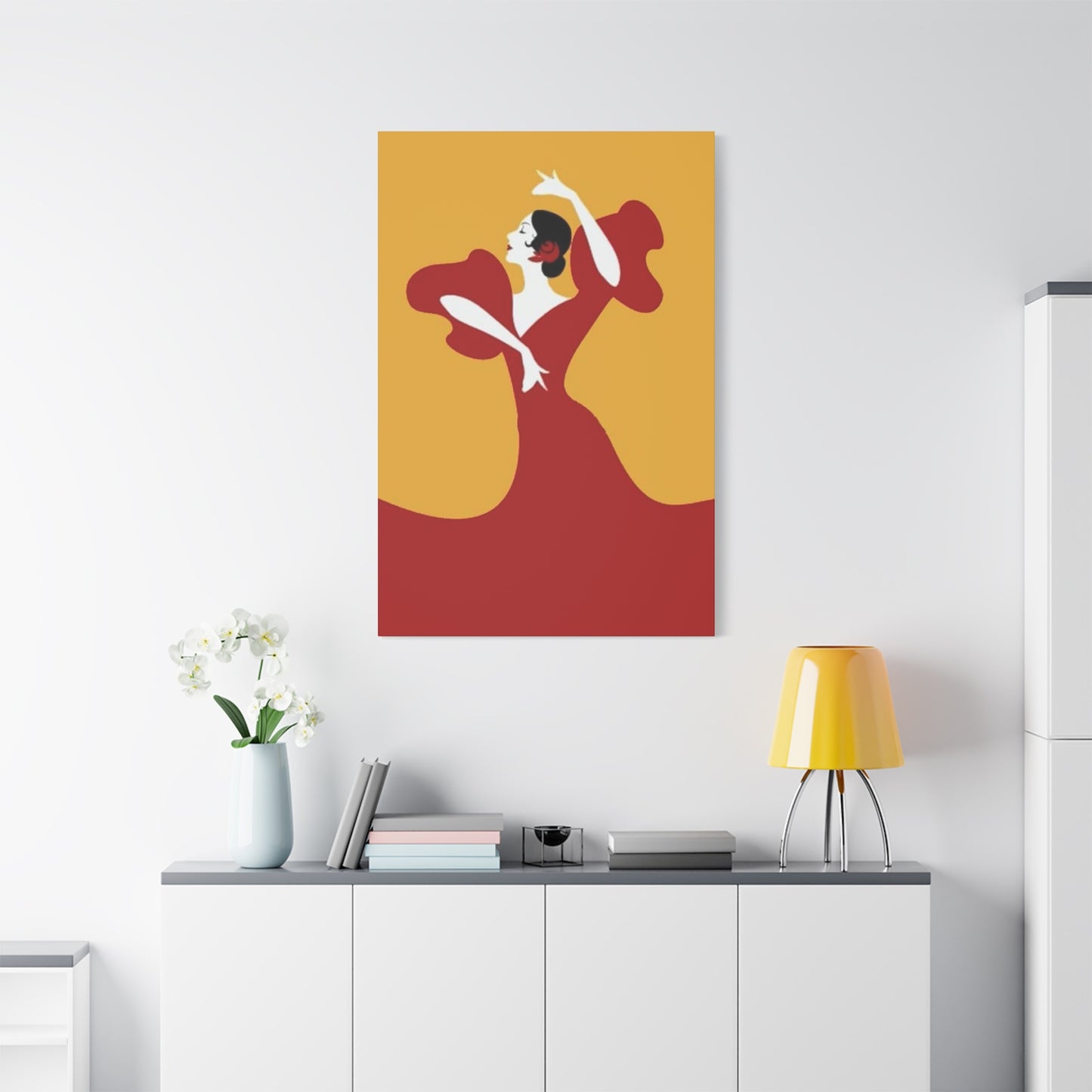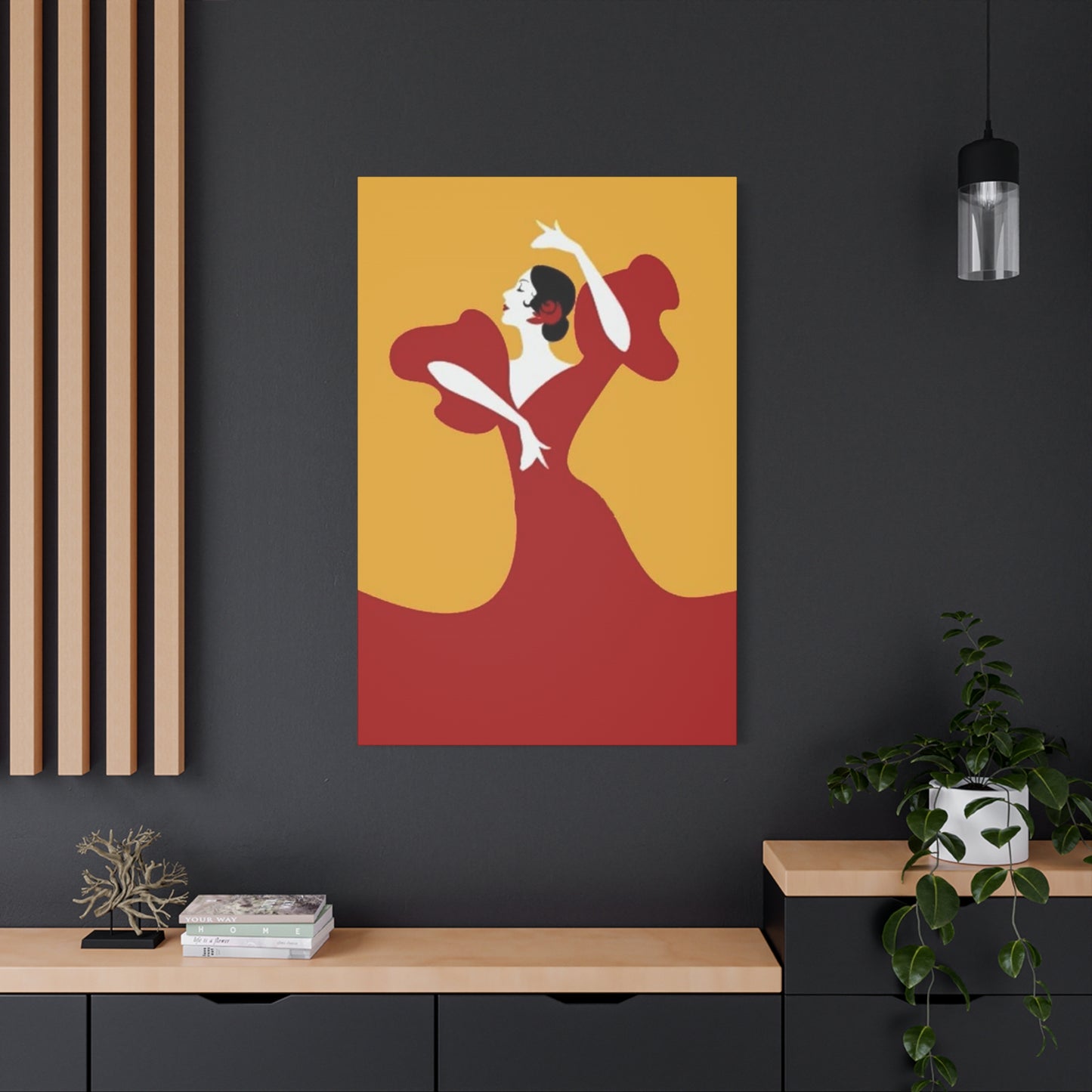Capturing Spanish Heritage Through Abstract Wall Art
Spanish heritage represents one of the world's richest cultural tapestries, woven together through centuries of artistic expression, architectural marvels, and vibrant traditions. When we explore the realm of abstract wall art that celebrates this heritage, we discover an extraordinary fusion of contemporary artistic techniques with deeply rooted cultural elements that have defined Spain for generations.
The beauty of capturing Spanish heritage through abstract wall art lies in its ability to distill the essence of traditional Spanish culture into modern, visually striking compositions. These artistic interpretations move beyond literal representations, instead focusing on the emotional resonance, color palettes, and symbolic elements that make Spanish culture so distinctive and universally appealing.
Abstract interpretations of Spanish heritage often incorporate the warm, earth-toned color schemes that are synonymous with the Iberian Peninsula. Rich ochres, deep terracottas, golden yellows, and vibrant crimsons create a visual language that immediately evokes the sun-drenched landscapes of Andalusia, the rustic charm of Castilian villages, and the passionate energy of Spanish festivals.
Artists working in this medium frequently draw inspiration from traditional Spanish motifs, reimagining them through contemporary artistic lenses. The intricate patterns found in Moorish tile work, the flowing lines reminiscent of flamenco dancers' movements, and the geometric precision of Spanish architectural elements all find new expression in abstract compositions that honor the past while embracing modern aesthetic sensibilities.
The process of creating abstract Spanish heritage wall art involves a deep understanding of the cultural significance behind various design elements. Artists must appreciate the historical context of Spanish visual culture, from the Islamic influences that permeated the southern regions during centuries of Moorish occupation to the Christian artistic traditions that shaped the northern territories.
Contemporary artists often explore the interplay between light and shadow that characterizes Spanish architecture, translating the dramatic contrasts found in historic buildings into abstract compositions that capture the same sense of drama and grandeur. The way sunlight filters through the courtyards of Seville's historic quarter or creates patterns on the walls of Barcelona's Gothic district becomes source material for abstract interpretations that maintain the emotional impact of these architectural experiences.
The spiritual dimensions of Spanish heritage also find expression in abstract wall art, with artists drawing inspiration from the country's rich religious traditions. The soaring arches of Gothic cathedrals, the intimate atmosphere of small chapels, and the ornate decorative elements of baroque churches all contribute to a visual vocabulary that can be abstracted and reimagined for contemporary spaces.
Spanish textile traditions offer another rich source of inspiration for abstract wall art. The intricate embroidery patterns found in traditional Spanish clothing, the bold geometric designs of regional rugs and tapestries, and the delicate lacework that has been perfected over generations all provide starting points for abstract compositions that celebrate these craft traditions in new ways.
The regionaldiversity of Spain adds layers of complexity to abstract interpretations of Spanish heritage. Each region contributes its own unique cultural elements, from the Celtic influences found in Galician art to the Mediterranean sensibilities of Catalonian design traditions. Abstract artists working with Spanish themes often focus on specific regional characteristics, creating pieces that celebrate the particular cultural identity of different areas while contributing to the broader narrative of Spanish heritage.
The contemporary relevance of Spanish heritage in abstract wall art speaks to the timeless appeal of Spanish culture. These artistic interpretations allow modern audiences to connect with traditional Spanish values of family, community, celebration, and artistic expression in ways that feel both authentic and contemporary. The abstract approach removes barriers that might exist with more literal representations, allowing viewers to engage with Spanish heritage on an emotional and aesthetic level that transcends specific cultural knowledge.
Transform Your Home with Spain-Inspired Canvas Prints
The incorporation of Spain-inspired canvas prints into residential spaces represents a sophisticated approach to interior design that celebrates cultural heritage while creating visually compelling environments. These artistic elements bring the warmth, passion, and aesthetic richness of Spanish culture directly into living spaces, creating homes that feel both internationally inspired and personally meaningful.
Spain-inspired canvas prints offer homeowners the opportunity to establish a distinctive design identity that goes beyond conventional decorative approaches. Rather than relying on generic artwork or mass-produced prints, these culturally specific pieces create spaces that tell stories and reflect the homeowner's appreciation for Spanish culture, whether through personal connection, travel experiences, or simply aesthetic admiration.
The transformative power of Spain-inspired canvas prints lies in their ability to establish mood and atmosphere within a space. The warm color palettes typically associated with Spanish art create environments that feel welcoming and energizing, while the cultural depth of the imagery adds layers of visual interest that reward closer examination and contemplation.
When selecting Spain-inspired canvas prints for home decoration, consideration must be given to the specific elements of Spanish culture that resonate most strongly with the intended space and the homeowner's personal aesthetic preferences. Some may be drawn to the architectural elements that characterize Spanish design, such as the flowing curves of Gaudí's modernist creations or the geometric precision of Moorish decorative patterns.
Others might prefer canvas prints that capture the natural beauty of the Spanish landscape, from the dramatic coastlines of the Costa Brava to the rolling hills of La Mancha dotted with olive groves. These landscape-inspired pieces bring the outdoors inside, creating connections with nature that can make interior spaces feel more expansive and connected to the broader world.
The human element of Spanish culture also provides rich material for canvas prints that can transform home environments. Representations of traditional Spanish festivals, flamenco performances, or everyday life in Spanish villages create artwork that celebrates the vibrancy and community spirit that characterizes Spanish society.
Size considerations play a crucial role in the successful integration of Spain-inspired canvas prints into home environments. Large-scale pieces can serve as focal points that anchor entire room designs, while smaller prints can be grouped together to create gallery walls that tell more complex visual stories. The key is matching the scale of the artwork to the proportions of the space and the intended impact.
The framing and presentation of Spain-inspired canvas prints also contributes to their transformative effect on home environments. Traditional framing approaches might emphasize the historical aspects of Spanish culture, while contemporary presentation methods can highlight the modern relevance and artistic sophistication of these cultural elements.
Color coordination between Spain-inspired canvas prints and existing interior design elements requires careful attention to ensure harmonious integration. The warm tones typically found in Spanish-inspired artwork can complement a wide range of interior color schemes, from neutral palettes that allow the artwork to take center stage to bold color combinations that create more dramatic and energetic environments.
The placement of Spain-inspired canvas prints throughout the home creates opportunities to establish visual connections between different spaces while maintaining the overall design coherence. Strategic placement can guide traffic flow, create focal points, and establish rhythm and balance throughout the living environment.
Lighting considerations become particularly important when displaying Spain-inspired canvas prints, as proper illumination can enhance the colors and details that make these pieces so compelling. Natural light that changes throughout the day can create different moods and reveal different aspects of the artwork, while carefully planned artificial lighting can ensure that the pieces remain visually impactful during evening hours.
The educational and conversational value of Spain-inspired canvas prints adds another dimension to their transformative effect on home environments. These pieces often serve as conversation starters that allow homeowners to share their appreciation for Spanish culture with guests, creating opportunities for cultural exchange and deeper social connections.
Maintenance and care of Spain-inspired canvas prints ensures that their transformative effect on home environments continues over time. Proper cleaning, appropriate environmental conditions, and protective measures all contribute to preserving both the visual impact and the cultural significance of these artistic investments.
Decorating with Abstract Traditional Spanish Wall Art
The art of decorating with abstract traditional Spanish wall art requires a nuanced understanding of how contemporary artistic interpretations can honor cultural heritage while serving modern aesthetic and functional needs. This approach to interior decoration creates spaces that are both visually sophisticated and culturally meaningful, establishing environments that celebrate the rich artistic traditions of Spain through a contemporary lens.
Abstract traditional Spanish wall art offers decorators and homeowners the opportunity to incorporate cultural elements without resorting to literal or potentially clichéd representations. Instead of obvious symbols or tourist-oriented imagery, abstract interpretations capture the essence, emotion, and aesthetic principles that underlie Spanish artistic traditions, creating pieces that feel both authentic and fresh.
The color relationships that characterize abstract traditional Spanish wall art reflect the natural and cultural landscape of Spain. The warm earth tones that dominate Spanish architecture, the brilliant blues of the Mediterranean coastline, and the rich greens of Spanish countryside all find expression in abstract compositions that can harmonize with a wide range of interior design approaches.
When incorporating abstract traditional Spanish wall art into interior spaces, consideration must be given to the specific elements of Spanish culture that the artwork represents or evokes. Some pieces might abstract the geometric patterns found in traditional Spanish tilework, creating compositions that echo the mathematical precision and decorative sophistication of these craft traditions.
Other abstract interpretations might focus on the organic forms and flowing lines that characterize Spanish architectural elements. The curves of baroque church facades, the undulating rooflines of traditional Spanish buildings, and the graceful arches that define Spanish arcades all provide starting points for abstract compositions that maintain the emotional impact of these architectural experiences.
The textural qualities that often characterize abstract traditional Spanish wall art add layers of visual interest that enhance their decorative impact. Techniques that simulate the weathered surfaces of ancient Spanish buildings, the smooth curves of ceramic tiles, or the intricate patterns of traditional textiles create artworks that invite both visual and tactile appreciation.
Scale relationships become particularly important when decorating with abstract traditional Spanish wall art, as the pieces must work harmoniously within the proportions of contemporary interior spaces while maintaining their cultural authenticity and visual impact. Large-scale abstract pieces can serve as commanding focal points that establish the cultural theme for entire rooms, while smaller works can be grouped to create more intimate and detailed cultural narratives.
The interplay between abstract traditional Spanish wall art and other decorative elements requires careful orchestration to achieve successful interior design outcomes. Furniture selection, textile choices, lighting decisions, and accessory placement all contribute to creating environments that support and enhance the cultural story being told through the artwork.
Contemporary furniture can provide an interesting counterpoint to abstract traditional Spanish wall art, creating dynamic tension between old and new that keeps spaces feeling current and relevant. The key is finding pieces that complement rather than compete with the artwork, allowing the cultural elements to remain prominent while ensuring that the overall space feels cohesive and livable.
Textile selections offer opportunities to reinforce the cultural themes established by abstract traditional Spanish wall art while adding comfort and warmth to interior spaces. Fabrics that echo the colors, patterns, or textures found in the artwork can create visual connections that strengthen the overall design narrative.
Lighting design plays a crucial role in successfully decorating with abstract traditional Spanish wall art, as proper illumination can reveal the subtle details and color variations that make these pieces so compelling. The quality and direction of light can dramatically affect how abstract elements are perceived and appreciated.
The seasonal adaptability of spaces decorated with abstract traditional Spanish wall art allows for year-round enjoyment and appreciation. The warm tones and cultural richness of these pieces can provide comfort during colder months while their sophisticated aesthetic remains appealing during warmer periods when spaces might be used differently.
Maintenance considerations ensure that the decorative impact of abstract traditional Spanish wall art remains consistent over time. Understanding the specific care requirements of different artistic mediums and taking appropriate protective measures helps preserve both the aesthetic and cultural value of these decorative investments.
Statement Walls: Spanish Art for Living Rooms
Creating statement walls with Spanish art in living rooms represents a bold and sophisticated approach to interior design that establishes cultural identity while providing visually compelling focal points. Living rooms serve as the social heart of the home, making them ideal spaces for showcasing artwork that reflects personal interests, cultural appreciation, and aesthetic sensibilities.
Spanish art brings a unique combination of warmth, sophistication, and cultural depth to living room environments. The rich artistic traditions of Spain, from classical paintings to contemporary interpretations, offer homeowners a vast array of options for creating statement walls that feel both personally meaningful and universally appealing.
The selection of Spanish art for living room statement walls requires consideration of both the specific characteristics of the space and the broader design goals for the room. Large living rooms can accommodate substantial pieces that make dramatic visual statements, while smaller spaces might benefit from carefully curated collections of smaller works that create visual interest without overwhelming the environment.
Color relationships between Spanish art and existing living room elements play a crucial role in creating successful statement walls. The warm tones that characterize much Spanish art can complement a wide range of interior color schemes, from neutral palettes that allow the artwork to dominate to bold color combinations that create more dynamic and energetic environments.
The positioning of Spanish art within living room statement walls affects both the visual impact and the functional success of the space. Artwork placed above seating areas creates intimate viewing experiences, while pieces positioned on walls visible from multiple angles can be appreciated from different vantage points throughout the room.
Scale considerations become particularly important when creating statement walls with Spanish art in living rooms, as the pieces must work harmoniously with both the architectural features of the space and the scale of the furniture. Oversized pieces can create dramatic focal points, while groupings of smaller works can tell more complex visual stories.
The framing and presentation of Spanish art for living room statement walls contributes significantly to the overall aesthetic impact. Contemporary framing approaches can highlight the modern relevance of Spanish artistic traditions, while more traditional presentation methods might emphasize the historical and cultural significance of the pieces.
Lighting design for Spanish art statement walls in living rooms requires careful planning to ensure that the artwork remains visually compelling under different lighting conditions throughout the day. Natural light from windows can create changing moods and reveal different aspects of the artwork, while carefully planned artificial lighting ensures consistent visual impact during evening hours.
The integration of Spanish art statement walls with other living room design elements requires thoughtful coordination to create cohesive and livable spaces. Furniture placement, textile selections, and accessory choices all contribute to supporting the cultural narrative established by the artwork while ensuring that the room remains functional for daily use.
Seating arrangements in living rooms with Spanish art statement walls should be planned to take advantage of viewing angles while maintaining comfortable conversation areas. The artwork should enhance rather than interfere with the social functions of the space, creating environments that encourage both art appreciation and interpersonal interaction.
Storage and display considerations for living rooms with Spanish art statement walls might include built-in shelving for art books, display areas for complementary objects, or hidden storage for seasonal decorative items. These functional elements should be integrated seamlessly with the overall design to maintain visual coherence.
The seasonal flexibility of living rooms with Spanish art statement walls allows for year-round enjoyment and periodic refreshment. Changing accessories, textile choices, or lighting approaches can create new moods and perspectives on the same artwork without requiring major design changes.
Acoustic considerations in living rooms with Spanish art statement walls ensure that the spaces remain comfortable for conversation and entertainment. The placement and materials of artwork can contribute to or detract from the acoustic properties of the room, requiring attention during the planning process.
The maintenance and protection of Spanish art in living room statement walls requires ongoing attention to environmental conditions, cleaning requirements, and security considerations. Living rooms experience more traffic and use than many other spaces, making proper care particularly important for preserving the artwork's condition and impact.
Blending Modern and Traditional Spanish Art Styles
The sophisticated practice of blending modern and traditional Spanish art styles creates interior environments that honor cultural heritage while embracing contemporary aesthetic sensibilities. This approach allows homeowners and designers to create spaces that feel both historically grounded and refreshingly current, establishing visual narratives that bridge different eras of Spanish artistic expression.
Traditional Spanish art encompasses a vast range of styles, techniques, and cultural influences that have evolved over centuries. From the intricate geometric patterns of Islamic art that influenced Spanish decorative traditions to the religious iconography of the Christian artistic tradition, from the realistic portraiture of Spanish masters to the folk art traditions of different regions, traditional Spanish art offers a rich vocabulary of visual elements that can be incorporated into contemporary spaces.
Modern interpretations of Spanish art styles build upon these traditional foundations while incorporating contemporary techniques, materials, and aesthetic approaches. Artists working in this hybrid tradition might use traditional Spanish color palettes while employing abstract compositional strategies, or they might reinterpret classic Spanish motifs using contemporary artistic media and presentation methods.
The successful blending of modern and traditional Spanish art styles requires a deep understanding of the cultural and aesthetic principles that underlie both approaches. Traditional Spanish art often emphasizes craftsmanship, cultural storytelling, and community values, while modern interpretations might focus more on individual artistic expression, formal experimentation, and contemporary relevance.
Color harmony becomes particularly important when blending modern and traditional Spanish art styles, as the pieces must work together to create cohesive visual experiences rather than competing for attention. The warm earth tones that characterize traditional Spanish art can be echoed in contemporary pieces through similar color choices or complemented through carefully planned contrasts.
Scale relationships between modern and traditional Spanish art pieces require careful consideration to ensure balanced and harmonious compositions. Large traditional pieces might be balanced by groupings of smaller contemporary works, while substantial modern pieces might be complemented by smaller traditional elements that provide historical context and cultural depth.
The placement and arrangement of blended modern and traditional Spanish art collections affects both the visual impact and the cultural narrative being communicated. Groupings that alternate between traditional and modern pieces can create dynamic visual rhythms, while arrangements that separate the different styles can allow each approach to be appreciated independently.
Framing and presentation strategies for blended collections of modern and traditional Spanish art can either emphasize the connections between different styles or highlight their distinctive characteristics. Consistent framing approaches can create visual unity, while varied presentation methods can emphasize the diversity and evolution of Spanish artistic expression.
The thematic connections between modern and traditional Spanish art styles provide opportunities for creating meaningful cultural narratives within interior spaces. Contemporary interpretations of traditional Spanish festivals, modern abstractions of classic architectural elements, or updated versions of traditional Spanish crafts all create bridges between past and present.
Lighting design for spaces that blend modern and traditional Spanish art styles must accommodate the different requirements of various artistic media while creating unified viewing experiences. Traditional paintings might require different lighting approaches than contemporary installations, but the overall lighting scheme should support appreciation of both styles.
The educational value of blending modern and traditional Spanish art styles allows viewers to appreciate the evolution and continuity of Spanish culture over time. These collections can serve as informal cultural lessons that demonstrate how artistic traditions adapt and evolve while maintaining their essential characteristics.
Seasonal adaptability in spaces that blend modern and traditional Spanish art styles can be achieved through temporary additions, lighting changes, or the rotation of smaller pieces. The permanent collection provides stability and cultural continuity, while changeable elements allow for fresh perspectives and seasonal variety.
The maintenance requirements for blended collections of modern and traditional Spanish art styles vary depending on the specific media and techniques involved. Traditional paintings might require different care approaches than contemporary installations, requiring knowledge of various preservation and maintenance techniques.
Investment considerations for blended modern and traditional Spanish art collections include both aesthetic and financial factors. Traditional pieces might appreciate in value over time, while contemporary works represent investments in current artistic expression and cultural evolution.
Curating a Home Gallery with Spain-Inspired Canvas Prints
The process of curating a home gallery featuring Spain-inspired canvas prints represents a sophisticated approach to art collecting and interior design that celebrates Spanish culture while creating personalized living environments. This curatorial practice requires the same attention to artistic quality, thematic coherence, and visual relationships that characterizes professional gallery spaces, adapted to the intimate scale and functional requirements of residential settings.
Successful curation of Spain-inspired canvas prints begins with developing a clear vision for the collection that reflects both personal interests and the intended role of the artwork within the home environment. Some collectors might focus on specific regions of Spain, creating collections that explore the distinctive cultural characteristics of areas like Andalusia, Catalonia, or the Basque Country.
Others might organize their collections around particular themes within Spanish culture, such as architectural elements, landscape representations, festival celebrations, or artistic movements. Thematic approaches allow for more focused exploration of specific aspects of Spanish culture while creating visual coherence throughout the collection.
The selection criteria for Spain-inspired canvas prints in home galleries must balance artistic quality with personal resonance and appropriateness for the intended spaces. High-quality prints that accurately reproduce the colors, details, and textures of original artworks ensure that the collection maintains its visual impact and cultural authenticity over time.
Size and scale considerations play crucial roles in home gallery curation, as the canvas prints must work harmoniously within the proportions of residential spaces while maintaining their individual visual impact. Varying sizes within a collection can create visual rhythm and hierarchy, with larger pieces serving as anchor points and smaller works providing supporting details.
The arrangement and hanging of Spain-inspired canvas prints requires careful attention to visual relationships, traffic patterns, and lighting conditions. Professional-quality hanging systems allow for easy repositioning and expansion of the collection over time, while proper spacing between pieces ensures that each work can be appreciated individually as well as part of the larger composition.
Color relationships within curated collections of Spain-inspired canvas prints affect both the visual coherence and the emotional impact of the gallery spaces. Pieces that share common color elements can create harmonious environments, while strategic contrasts can add visual excitement and prevent monotony.
The chronological or stylistic organization of Spain-inspired canvas prints within home galleries can create educational narratives that enhance viewers' understanding and appreciation of Spanish culture. Arrangements that move from traditional to contemporary interpretations, or from realistic to abstract representations, can illustrate the evolution and diversity of Spanish artistic expression.
Documentation and cataloging of Spain-inspired canvas print collections adds both practical and educational value to home galleries. Detailed records of artist information, cultural contexts, acquisition dates, and care instructions help preserve the collection's value while providing information that enhances appreciation and understanding.
Lighting design for home galleries featuring Spain-inspired canvas prints requires professional-level attention to color temperature, intensity, and direction to ensure optimal presentation of the artwork. LED lighting systems offer energy efficiency and precise color reproduction while generating minimal heat that could damage the prints over time.
The integration of home galleries with daily living activities requires careful balance between museum-quality presentation and residential functionality. Gallery spaces should enhance rather than interfere with the normal use of the home while providing appropriate environments for art appreciation and cultural celebration.
Conservation considerations for Spain-inspired canvas prints in home galleries include environmental controls, protective measures, and regular maintenance schedules. Proper humidity and temperature control, protection from direct sunlight, and regular cleaning help preserve both the visual quality and the cultural significance of the collection.
The expansion and evolution of curated home galleries allow collectors to deepen their engagement with Spanish culture over time. New acquisitions, temporary exhibitions of borrowed pieces, and periodic reorganization of existing works keep the gallery spaces fresh and engaging while reflecting the collector's growing knowledge and appreciation.
Insurance and security measures for valuable collections of Spain-inspired canvas prints protect both the financial investment and the cultural significance of the artwork. Professional appraisals, appropriate insurance coverage, and security systems ensure that the collection remains safe and properly valued.
The social and educational functions of home galleries featuring Spain-inspired canvas prints extend the cultural impact beyond the immediate household. These spaces can serve as venues for cultural education, social gatherings, and community engagement that celebrates and shares appreciation for Spanish culture.
How Abstract Spanish Wall Art Elevates Interiors
Abstract Spanish wall art possesses a unique capacity to elevate interior spaces through its sophisticated blend of cultural depth, aesthetic refinement, and contemporary relevance. This artistic approach distills the essence of Spanish culture into visually compelling compositions that enhance the atmosphere, character, and emotional resonance of interior environments while avoiding literal representations that might feel restrictive or culturally insensitive.
The elevating effect of abstract Spanish wall art stems from its ability to introduce layers of cultural meaning and aesthetic sophistication without overwhelming or constraining the overall design scheme. These pieces function as cultural ambassadors that bring the warmth, passion, and artistic heritage of Spain into contemporary living spaces in ways that feel both authentic and appropriate for modern lifestyles.
Color plays a fundamental role in how abstract Spanish wall art elevates interiors, introducing the warm, earthy palettes that characterize Spanish visual culture. The rich ochres, deep terracottas, golden ambers, and vibrant crimsons that appear in these works create environments that feel welcoming, energizing, and emotionally engaging while maintaining sophisticated aesthetic appeal.
The textural qualities often found in abstract Spanish wall art add tactile and visual interest that elevates the sensory experience of interior spaces. Techniques that suggest the weathered surfaces of ancient Spanish buildings, the smooth curves of traditional ceramics, or the intricate patterns of regional textiles create artwork that rewards close examination while contributing to the overall richness of the environment.
Scale and proportion considerations allow abstract Spanish wall art to elevate interiors by creating appropriate visual weight and presence within different spaces. Large-scale pieces can serve as dramatic focal points that anchor entire room designs, while smaller works can be grouped to create intimate moments of cultural connection and aesthetic appreciation.
The sophisticated abstraction of Spanish cultural elements allows these artworks to elevate interiors without imposing specific lifestyle requirements or cultural affiliations on the inhabitants. The pieces suggest rather than dictate, creating opportunities for personal interpretation and emotional connection while maintaining their cultural authenticity and artistic integrity.
Abstract Spanish wall art elevates interiors through its ability to establish mood and atmosphere that reflects the celebratory, community-oriented, and aesthetically conscious aspects of Spanish culture. These pieces create environments that encourage social interaction, cultural appreciation, and aesthetic contemplation while maintaining the functionality required for contemporary living.
The intellectual and educational value of abstract Spanish wall art contributes to its ability to elevate interior environments by adding layers of meaning that reward ongoing engagement and discovery. Viewers can explore the cultural references, artistic techniques, and aesthetic principles embodied in these works, creating opportunities for personal growth and cultural understanding.
The versatility of abstract Spanish wall art allows it to elevate a wide range of interior design styles while maintaining its cultural authenticity and artistic impact. These pieces can complement minimalist contemporary spaces, traditional environments, eclectic collections, or transitional designs while contributing their unique combination of cultural depth and aesthetic sophistication.
Styling Bedrooms with Traditional Spanish Canvas Prints
The intimate environment of the bedroom provides a unique opportunity for incorporating traditional Spanish canvas prints in ways that create personal sanctuaries infused with cultural warmth and aesthetic beauty. Bedroom styling with these culturally rich artworks requires sensitivity to the private, restful nature of the space while honoring the vibrant, celebratory aspects of Spanish culture that make these pieces so compelling.
Traditional Spanish canvas prints bring a distinctive combination of warmth, sophistication, and cultural depth to bedroom environments. The rich artistic heritage of Spain, encompassing everything from religious iconography to folk art traditions, offers a vast array of options for creating bedroom spaces that feel both personally meaningful and universally beautiful.
Color considerations become particularly important when styling bedrooms with traditional Spanish canvas prints, as these spaces must balance the vibrant, warm tones characteristic of Spanish art with the calm, restful atmosphere required for sleep and relaxation. The earth tones, warm reds, and golden yellows found in Spanish art can create cozy, enveloping environments when used thoughtfully.
The selection of traditional Spanish canvas prints for bedroom styling should reflect both the personal interests of the inhabitants and the specific functional and aesthetic requirements of the space. Pieces that evoke tranquility, natural beauty, or spiritual contemplation might be more appropriate for bedroom environments than those that suggest high energy or celebration.
Scale relationships play crucial roles in successful bedroom styling with traditional Spanish canvas prints. The intimate proportions of most bedrooms require careful consideration of artwork size to ensure that pieces enhance rather than overwhelm the space. Large-scale pieces can create dramatic focal points above headboards, while smaller works can be grouped to create gallery walls that add visual interest without dominating the environment.
The placement of traditional Spanish canvas prints within bedroom spaces affects both the visual impact and the functional success of the room. Artwork positioned where it can be appreciated from the bed creates opportunities for quiet contemplation, while pieces placed near seating areas or dressing spaces can be enjoyed during different bedroom activities.
Lighting design for bedrooms featuring traditional Spanish canvas prints requires attention to both the aesthetic presentation of the artwork and the functional lighting needs of the space. Adjustable lighting systems allow the artwork to be properly illuminated for appreciation while providing appropriate lighting levels for reading, dressing, and relaxation activities.
The integration of traditional Spanish canvas prints with bedroom furnishings and textiles requires careful coordination to create cohesive, comfortable environments. Bedding, window treatments, and furniture selections should complement the colors and cultural themes established by the artwork while maintaining the comfort and functionality required for bedroom spaces.
Bringing the Spirit of Spain into Your Home Decor
The endeavor of bringing the spirit of Spain into home decor represents a comprehensive approach to interior design that celebrates the multifaceted nature of Spanish culture while creating living environments that embody the warmth, passion, and aesthetic sophistication for which Spain is renowned worldwide. This cultural integration goes beyond mere decoration to create homes that reflect the values, traditions, and lifestyle approaches that define Spanish culture.
The spirit of Spain encompasses a rich tapestry of cultural elements, from the architectural grandeur of historic cities to the intimate charm of village life, from the dramatic landscapes of the peninsula to the vibrant celebrations that mark the passage of seasons and important life events. Capturing this spirit in home decor requires understanding and appreciation for the depth and diversity of Spanish cultural expression.
Regional variations within Spanish culture provide numerous opportunities for creating distinctive home decor approaches that reflect different aspects of the Spanish spirit. The Moorish influences of Andalusia suggest different decorative strategies than the Celtic traditions of Galicia, while the Mediterranean sensibilities of Valencia contrast with the mountain culture of the Pyrenees.
Color plays a fundamental role in bringing the spirit of Spain into home decor, as the warm, vibrant palettes associated with Spanish culture create environments that feel welcoming, energizing, and emotionally engaging. The earth tones of Spanish architecture, the brilliant blues of coastal regions, and the rich greens of interior landscapes all contribute to color schemes that embody Spanish cultural values.
Architectural elements offer powerful ways to incorporate the spirit of Spain into home decor, whether through the addition of actual architectural features or through decorative elements that suggest Spanish building traditions. Arched doorways, decorative tilework, wrought iron details, and exposed beam ceilings all evoke the physical environment of Spain while creating spaces that feel authentic and culturally grounded.
Textile selections provide opportunities to bring Spanish cultural traditions into home decor through patterns, textures, and craftsmanship that reflect regional specialties and artistic heritage. Traditional Spanish textiles, from the intricate embroideries of different regions to the bold geometric patterns of historic rugs, offer inspiration for fabric choices that enhance cultural authenticity.
Large-Scale Abstract Spanish Canvas Prints for Statement Walls
Large-scale abstract Spanish canvas prints represent a bold and sophisticated approach to creating statement walls that command attention while celebrating the rich cultural heritage of Spain through contemporary artistic interpretation. These substantial artworks possess the visual power to anchor entire room designs while introducing cultural depth and aesthetic sophistication that elevates the overall interior environment.
The impact of large-scale abstract Spanish canvas prints stems from their ability to create immediate visual drama while maintaining cultural authenticity and artistic integrity. These pieces function as cultural focal points that establish the aesthetic and emotional tone for entire spaces while providing ongoing visual interest that rewards extended contemplation and appreciation.
Color relationships become particularly important in large-scale abstract Spanish canvas prints, as the substantial size of these pieces means that their color choices will significantly influence the overall atmosphere of the spaces they occupy. The warm, earth-based palettes characteristic of Spanish culture create environments that feel welcoming and energizing while maintaining sophisticated aesthetic appeal.
The abstract interpretation of Spanish cultural elements allows large-scale canvas prints to capture the essence of Spanish heritage without overwhelming spaces with literal representations that might feel restrictive or culturally inappropriate. These pieces suggest rather than dictate, creating opportunities for personal interpretation while maintaining their cultural authenticity.
Conclusion
Abstract wall art inspired by Spanish heritage offers a distinctive way to celebrate culture, history, and artistic expression while enhancing the visual appeal of interior spaces. By translating traditional Spanish motifs, colors, and rhythms into modern abstract compositions, these artworks create walls that are both culturally rich and visually dynamic. Whether displayed in living rooms, offices, dining areas, or creative studios, Spanish-inspired abstract art elevates interiors with energy, sophistication, and a sense of connection to the vibrant spirit of Spain.
The appeal of abstract Spanish wall art lies in its ability to merge tradition with contemporary design. Artists reinterpret elements such as flamenco patterns, architectural forms, folkloric motifs, and regional color palettes into innovative shapes, textures, and arrangements. The use of warm terracotta tones, deep reds, bold blues, and golden accents captures the intensity and passion inherent in Spanish culture, while abstract forms add fluidity, movement, and modernity. Each piece becomes more than decoration—it is a celebration of heritage, creativity, and visual storytelling that engages viewers and enriches interiors.
Beyond aesthetics, Spanish-inspired abstract art carries symbolic and emotional significance. It evokes the rhythm, vibrancy, and warmth of Spanish culture, inspiring creativity, celebration, and a sense of cultural pride within interior spaces. The abstract interpretation encourages viewers to connect with the artwork personally, sparking imagination and reflection, while offering subtle storytelling that adds depth and narrative richness to the décor. Whether featured as a central statement piece or as part of a gallery wall, these artworks bring both visual and emotional resonance to any room.
From a design perspective, Spanish abstract wall art is versatile and adaptable. Large-format canvases create dramatic focal points in living rooms, dining areas, or studios, while smaller prints enhance hallways, bedrooms, or reading nooks with refined elegance. The bold colors, intricate textures, and fluid compositions harmonize with contemporary, eclectic, or even minimalist interiors, allowing the artwork to complement and elevate a variety of design styles.
Ultimately, abstract wall art capturing Spanish heritage is more than decorative—it is a celebration of culture, artistry, and emotional expression. By incorporating these pieces into interiors, individuals can transform walls into engaging, inspiring spaces that honor tradition, evoke creativity, and bring the lively essence of Spain into their homes. Each artwork serves as a bridge between heritage and modern design, enriching interiors with both visual beauty and cultural significance.

















